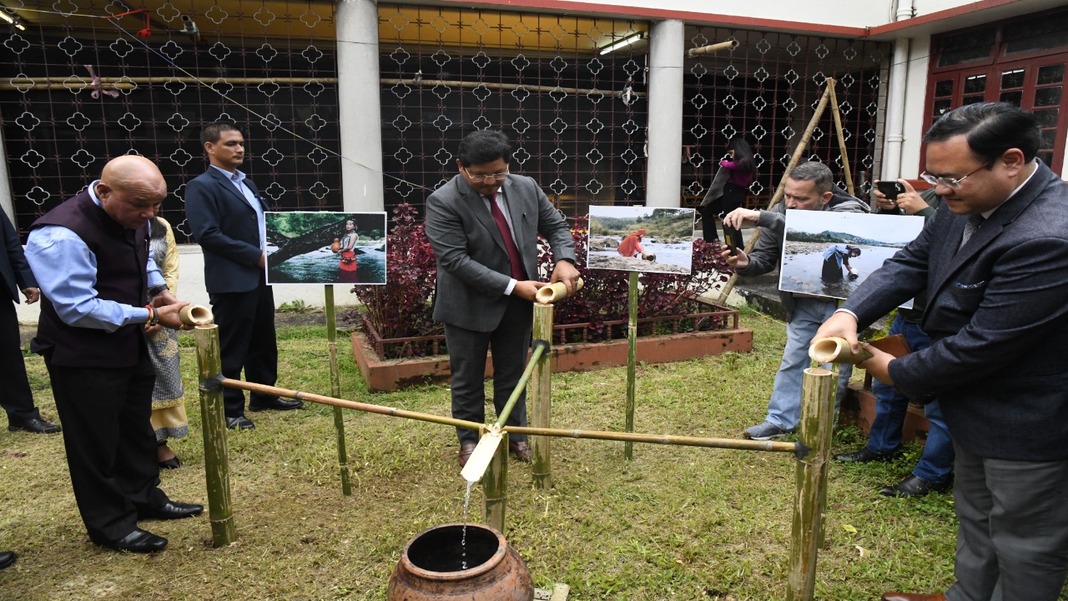By Medapyndapshisha Marwein
Shillong, Oct 15: It’s autumn season and the city of Shillong is brimming with festivals highlighting the state’s natural and indigenous beauty it has to offer. One such festival, the Tri Hills Ensemble, which is a two-day event (Oct 14-15), was inaugurated in the state on Friday by the Chief Minister. The event, a first of its kind, stresses on the importance of three major tribes, the Khasi, the Garo and the Jaintia that have contributed to the growth of the state.
In collaboration with the Centre’s Ministry of Cultural Affairs and the state’s Department of Arts and Culture, Soso Tham Auditorium witnessed the convergence of the three tribes which is somehow symbolic through the water confluence ceremony performed by the CM.
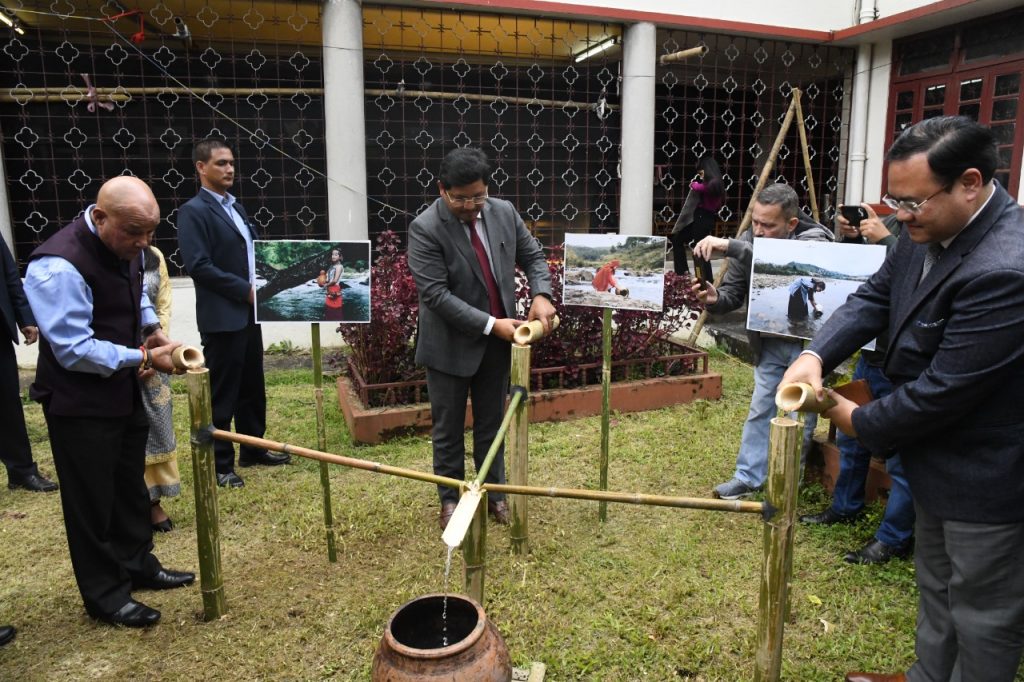
In this ceremony, the water taken from three big rivers of Meghalaya were merged together as one (called ‘ka um ba la khleh’ in Khasi, roughly translated as mixing of the water from the three rivers), perhaps signifying a coming together of tribes. A tree was planted by the CM and watered by the ‘um ba khleh’ as it ushers in an era of growth and survival of the tribal identity.
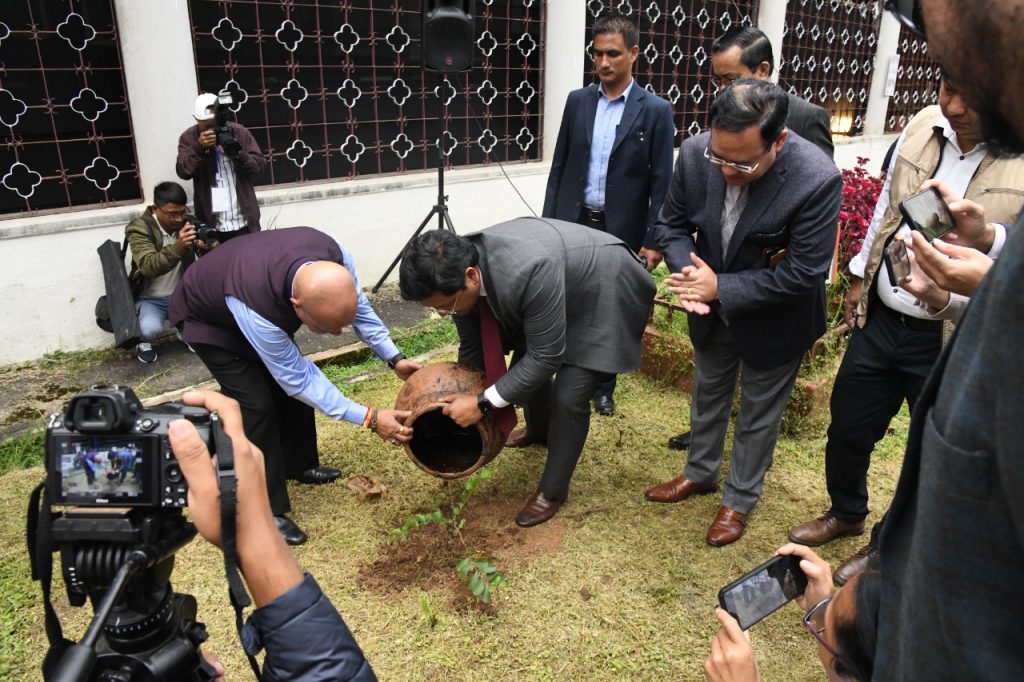
Tribal huts and stalls were constructed in the essence of these three tribes in the venue and one is transported back to where our forefathers and ancestors once tread this land, with Meghalaya’s renowned painter and musician Benedict Hynniewta’s flute music making it more nostalgic of the grand old days.

At the ever so bold art section of the venue, folklore representations were lined up in colourful paintings created by the well known painters of the state from Careen Langstieh, Benedict Hynniewta, Raphael Warjri, Tony Slong and so on. This section lives and breathes tribal identity as it takes the spectator on a journey of myths and lore as they mingle with the present world. Benedict Hynniewta, a painter seeped in tribal roots, had three of his paintings hung at the section. People who have seen and known about Hynniewta could always spot his distinct signature style, the egg which is, according to the Khasi, an important object in rituals like the naming ceremony or warding off sickness and the like. One such painting of his depicts fossilised roots and an egg.
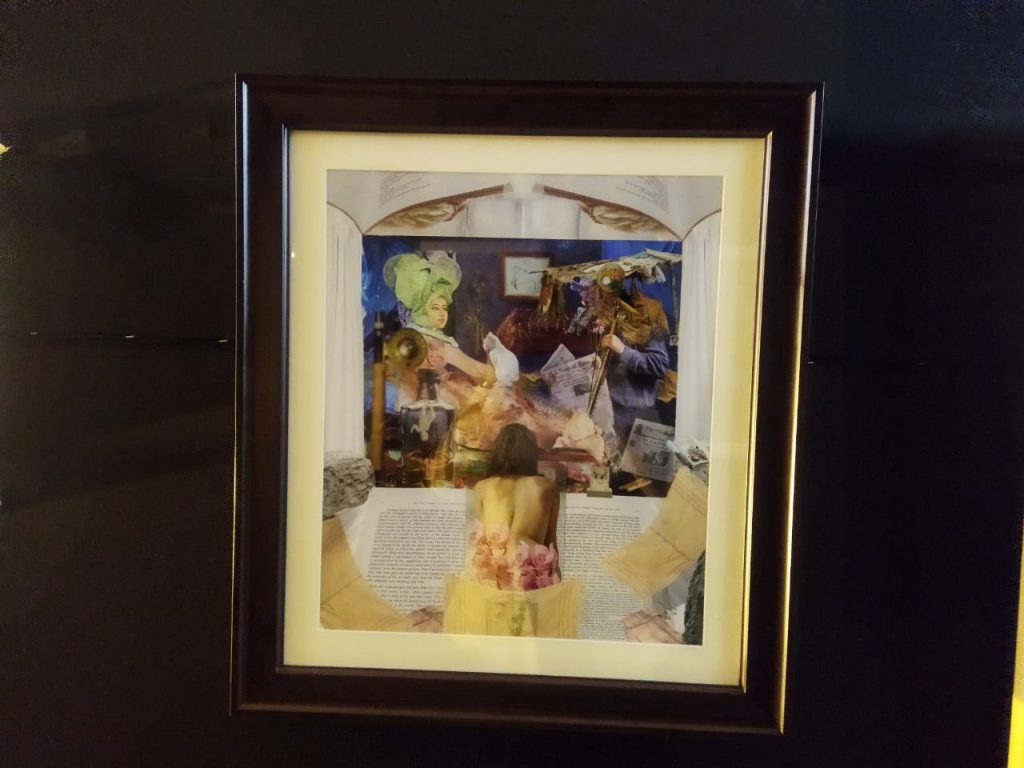

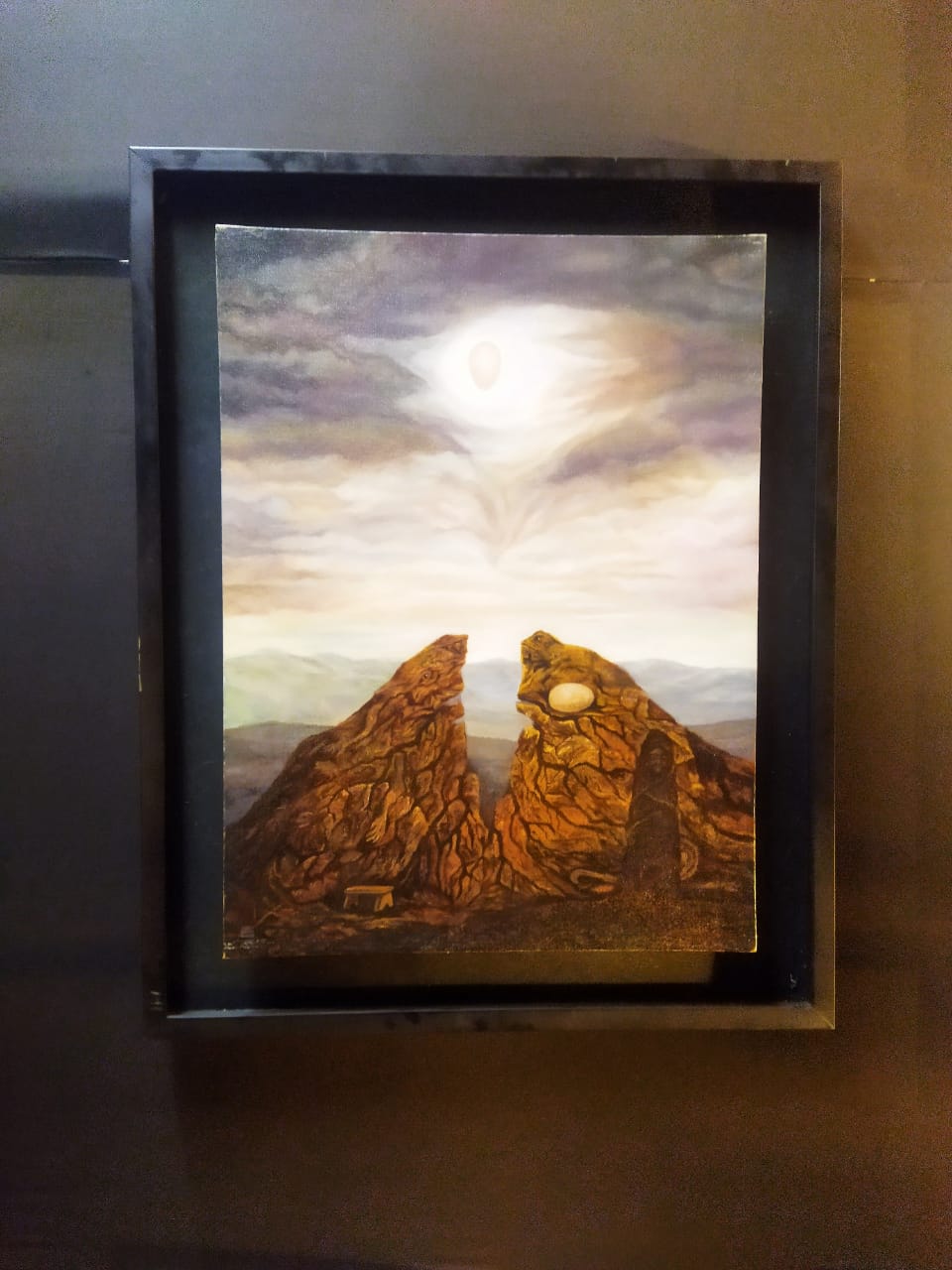
“As the Khasis,” Hynniewta says “we believe in the ‘kha pylleng’ or ‘shad pylleng’ or as we call it ‘egg divination’. For me, finding a connection to bridge heaven and earth and that the only answer one could find is when the egg is broken in the ‘dieng khan’ (wooden board). I’m interested in that kind of primordial landscape in which people could weave their own imagination on top of it.”
At the Food and Beverages section, one could hear people passing stories over beer and ‘dohsnam’ (blood sausage). At the Handloom section, traditional clothes in vibrant colours call unto the passerby to pick them. At the Market section, mini iewduh (market) offers one a range of tribal and common vegetables and eatables and finally, at the Painters’ section, paintings are lined up to be observed and interpreted.
One visitor from Assam, Amrita Baruah, who is vacationing in these hills, eyed the event with awe and told Hub News of her experience. “I have never come across an event where all three tribes, that I have come to know while I was studying here, sit in a room with all their cultural extravagance. It’s a joy to actually taste doh snam (blood sausage) with Garo fermented rice beer. It’s a combination I never knew I needed and the folklore painting gallery just makes me want to know more about this place!” she excitedly remarked as she chomped on another piece of doh thad (dried meat).
Here, in the venue, in this busy part of the town you could hear tunes of old in the form of drums and flutes and the songs of tribes converging in harmony to narrate stories and disseminate cultural practices that were long lost. As F R Kharkongor, Chief Electoral Officer (CEO), puts it, “One should come and experience Meghalaya in its entirety, in its natural landscape and also in its rich culture.”



